Grief from glass, a premonition of disaster and Shukshin’s torment
[ad_1]
Stock exhibition at the Academy of Arts, where they showed art for half a century
At first glance, the anniversary exhibition at the Academy of Arts, presenting the works of artists from the mid-twentieth century to this day, looks like an unexpected and discordant assortment. The range of themes and genres is striking in contrast: warm landscapes coexist with works in a harsh style, and avant-garde nudity with a realistic bronze bust of Patriarch Alexy and portraits of women who lost their husbands and sons on the fronts of the Great Patriotic War and seem to have aged in an instant. But all of them are united by one thing: the author’s extremely personal attitude to his creation. Each work is a gift from the artist of the Russian Academy of Arts, a work that the master considered important to preserve for history.
The Academy of Arts is celebrating its 265th anniversary with a series of exhibitions, among which the key one is from the funds of the Russian Academy of Arts, which today comprise more than 3,000 works. At the opening, it was announced that the academy – now the largest center for the study, preservation and development of art and art history in Russia – plans to open a separate museum to showcase its vast collection. In the meantime, in the gallery on Prechistenka you can see a small part of it – several dozen works over the past half century. A modest description of the exhibition is limited to the application of the topic of searching for the author’s language within the framework of academic tools: oil on canvas, sculpture, art glass, ceramics, etc. However, each work has its own, sometimes quite dramatic, story. There is a tradition in the academy: after the exhibition, the artist leaves one or two works in the collection. And each author tried to keep something important and special in one of the main collections of the country.
Vice-President of the Russian Academy of Arts, artist Viktor Kalinin, for example, donated portraits of his parents to the Academy – a diptych in an avant-garde style (2010). The father is depicted as a creator and builder, he hews a board with an ax. And the mother looks like a frozen ancient Venus – there is something iconic in this image. The author’s parents happened to live in a difficult era, Kalinin’s father went through the First and Second World Wars, but retained himself and saw the main creative energy in work. For the artist, who was born into a family of Old Believers in Altai, this is “an ideal model of spiritual life.” From childhood, Victor absorbed the traditions of the Russian Middle Ages, and as he grew up, he became interested in the art of the Renaissance, and began to regularly travel to Athos. And on canvas he left the academic school, parted with Soviet stereotypes, found his own visual language, which combines harmony and rebellion. Memory is one of the most important topics for an artist. “The property of human nature is to inherit what disappears, but still remains inside. The whirlwind transforms what has been carried away by the wind of change. Something passes, but something will certainly come back, ”he is sure.
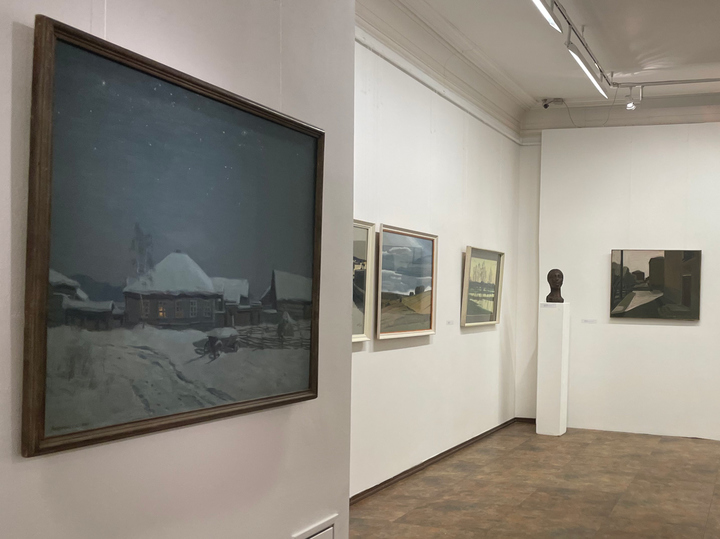
And here is the pacifying landscape of Sergei Andriyaka: a winter evening, wooden huts covered with snow caps, the light of a lonely lamp in one of the windows. This work is only at first glance “quiet”: tension is read in dark colors. It was written during a creative expedition to the Shushenskoye Museum-Reserve in 1983. At the same time, the artist visited the Sayano-Shushenskaya hydroelectric power station, which was just under construction at that time. The highest dam in Russia was built from 1963 to 2000, and in 2009 there was the largest accident in the history of Russian hydropower, which claimed the lives of 75 people. “I saw the scale of destruction that construction caused to nature. It was sad to write HPS. The paintings were not accepted, they were considered critical,” says the artist.
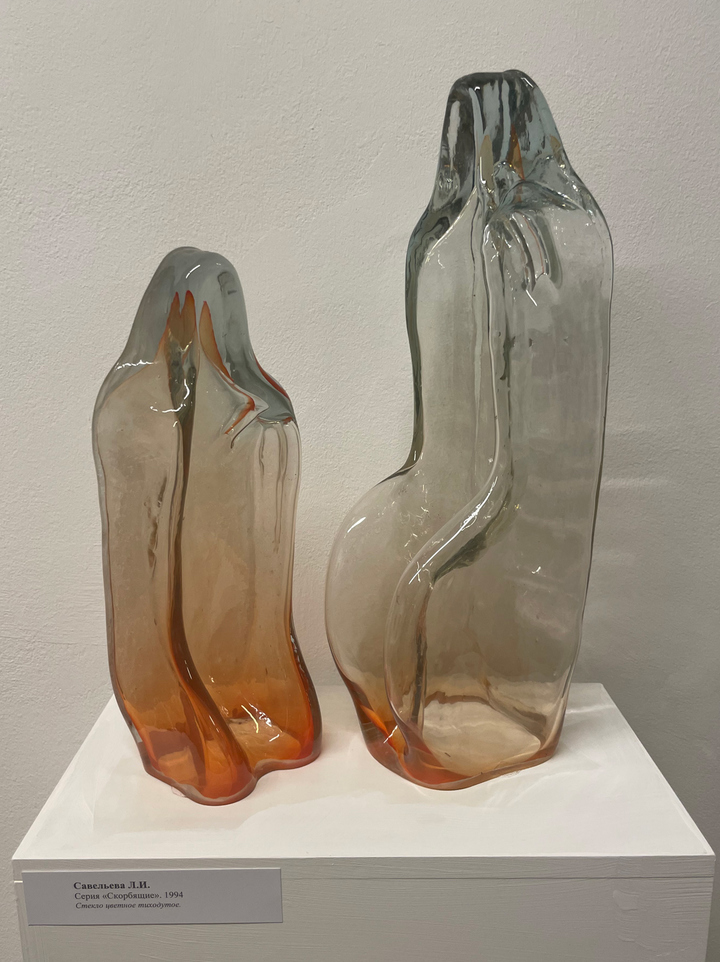
The minor motif is also in the work “Grieving” by Lyubov Savelyeva, who was born in 1940 and lost her father early. Art critics consider this composition, incredible in terms of plasticity, an unconditional reference to the painting by the master of the severe style Viktor Popkov “Remembrance. Widows.” The same can be said about the canvas “Memory” (1985) by Janna Tutundzhana or the portrait of Vasily Shukshin by Igor Obrosov, which seems to have absorbed not only the writer’s creative torment, but also the personal pain of the author, whose father, a famous doctor, director of the Institute. N.V. Sklifosovsky Pavel Obrosov was shot in 1938.
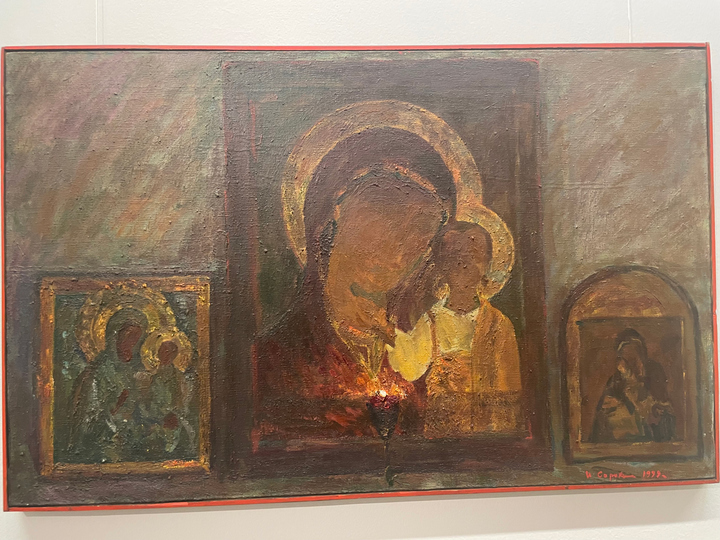
The artists find repose for this grief in religious images, as in the painting by Ivan Sorokin, who paints temple icons with erased faces. In the nude, painted with slight irony, as in the work of Gennady Myznikov’s “Academy of Arts” (1992), where stern men in jackets surrounded the radiant youth and almost toy beauty of the model. Or in a sarcastic nudity, as in the painting by Tatyana Nazarenko, fanned by the spirit of Bulgakov’s demonism. Or in Levitan’s calm landscapes – Irakli Toidze, Alexander Klyuev, Andrey Mylnikov. And also in personal everyday life: the painting by Zurab Tsereteli, for example, depicts the artist’s palette, and on the self-portrait of Kirill Shchebeko, he painted himself with his back to the viewer, facing his canvases, occupying the entire living space of the master.
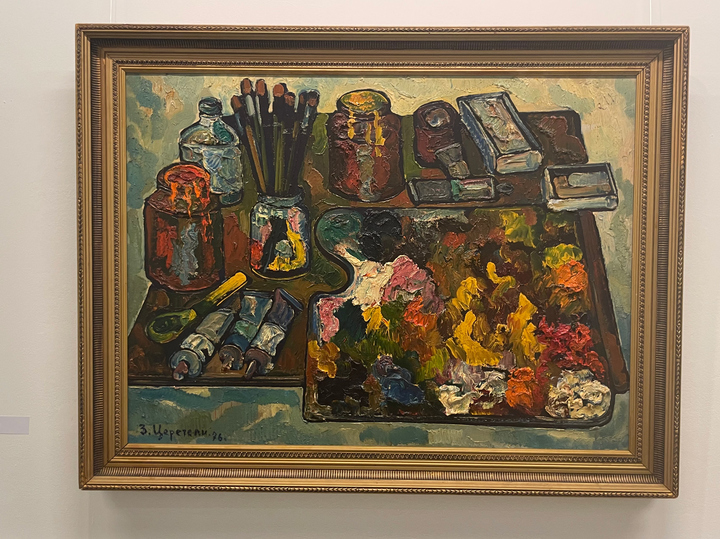
In the final section, the viewer is faced with a man-made future. Here is a digital work by Konstantin Khudyakov, depicting the eye of the angel of the Apocalypse, in the pupil of which skyscrapers gazing into the clouds are reflected. “The Age of Fish” by Igor Snegur, assembled from microcircuits. “Passion” from hundreds of multi-colored dots, which draws not a plot, but an emotion, was created by Yevgeny Vakhtangov, the grandson of the great director. And “The Fold” by Ivan Kazansky is a work in the style of op-art, where the image seems to come out of the canvas. These experiments somehow coexist with custom-made busts, a fabulous bronze bas-relief of a convinced monarchist Andrei Balashov, and abstractions by Nikolai Rothko, referring to the experiments of the avant-garde artists of the early twentieth century.
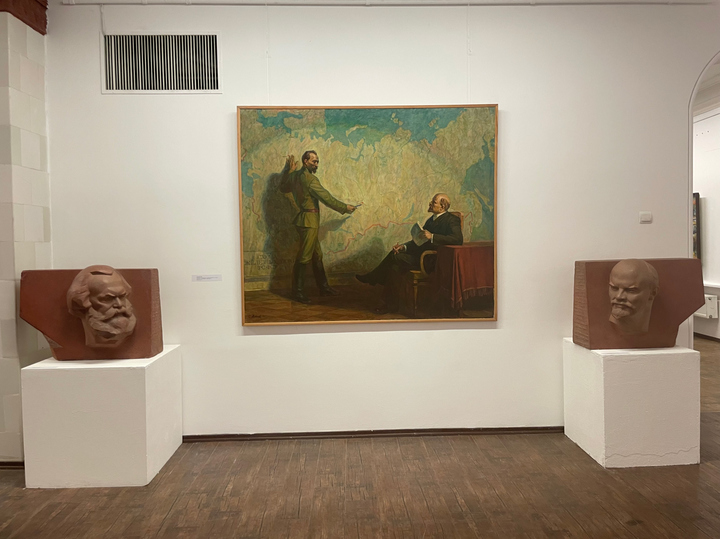
In a word, the “palette” of the academy’s artists is very diverse, each one has its own position, search and mood. From this polyphony, an impressive portrait of art over the past half century is formed.
[ad_2]
Source link






